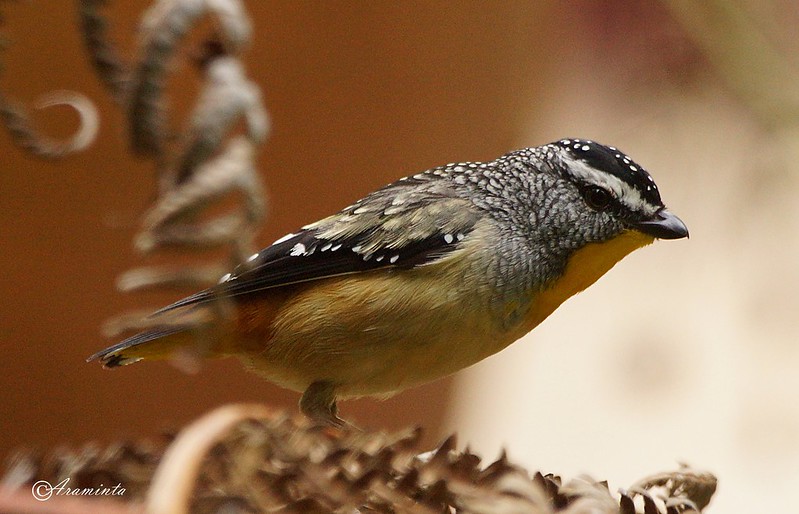While looking for some young Fairy Wrens, I found this little guy trying to get a grip and not fall off a branch. I also found some young Wrens and New Holland Honeyeaters. The wrens were well hidden in a shrub though. Here are some photos of the tiny Pardalote. Enjoy.


Baby Pardalote
Thu, 15/11/2012 - 13:29
#1
Araminta


Baby Pardalote









great shots M-L - even though i couldn't tell the difference between this one and an adult one
I thought the same thing Nathan, but the little one wasn't in control of his legs yet. He struggled to hold on the branch and his flight efforts weren't that good either. (unless he was drunk?) He also called very loudly for his parents. (he wouldn't have done that if he was drunk )
)
M-L
awesome , so jealous
Neil
I'm wondering if there's been a sudden increase in spotted pardalotes. Whereas in the past I've seen them very occasionally at our place & then for only a day, we've had a pair calling for about four weeks so far this spring. Perhaps this is an aberration specific to us but Araminta's photo made me wonder what other members are experiencing with this species.
I have also noticed more pardalotes around than I usually do.
I can hear them all day (when I am at home) and see them occasionally.
- soakes
soakes
Olinda, Victoria, Australia
I have noticed quite a few more, I even nearly stepped on a nest until the birds flew out just as my foot was about to hit the ground above the nest. I was watching a Willie Wag Tail nest right above the Pardalotes. I will post some shots later not as good as M-L's
Matt
Nice pics. Thanks for sharing.
Regards
Alex
unless he was calling for his drinking friends
but seriously, great pics
Peter
Just like you, I have noticed more Pardalotes this year. But my husband already laughs about me, I start to panic every year when I get the impression certain birds have not appeared yet. Last year , like this year, the aggressive Wattlebirds come first. They chasse all the smaller birds away. The Yellow Robins will start their breeding later, and there is plenty of time for the wrens. I just had a look what month I took all those photos of juveniles last year, most were taken in December. So, I’m not worried yet. But you are right, one season there are more birds of one species than during the last season. Could it be that birds have learned how to regulate overpopulation? (hmm, should the human species learn from this?)
M-L
One thing I have noticed is that there are hardly any sparrows around any more. Instead there are thornbills, pardalotes and silvereyes.
That is good, but there are heaps of blackbirds and Indian minahs too :-(
- soakes
soakes
Olinda, Victoria, Australia
same at my place, at the moment I have more Thornbills than ever before. Also White-browed Scrub wrens. I'm lucky though, where we live there aren't any Sparrows or Indian Minahs, but a few Blackbirds. Don't think it has much to do with the vegetation around our place, nothing has changed here. I think birds come and go in cycles.
M-L
And different species of animals respond differently to different conditions. Amazing isn't it?
Araminta, I doubt that birds learn to regulate overpopulation. Rather I think their breeding is regulated largely by the availability of resources. E.g., low rainfall means less breeding of insects & lower plant & flower generation to provide food as well as less nesting materials & nesting places. Humans, on the other hand, are currently exercising their capacity to over-ride this natural system to the point where resources to sustain their population will be exhausted. Then we'll see just how intelligent humans are.
Hi Araminta so good to hear about the Pardalotes, one of my most favourite birds. Thanks so much for the beautiful photos as always
Dianne
Childers QLD